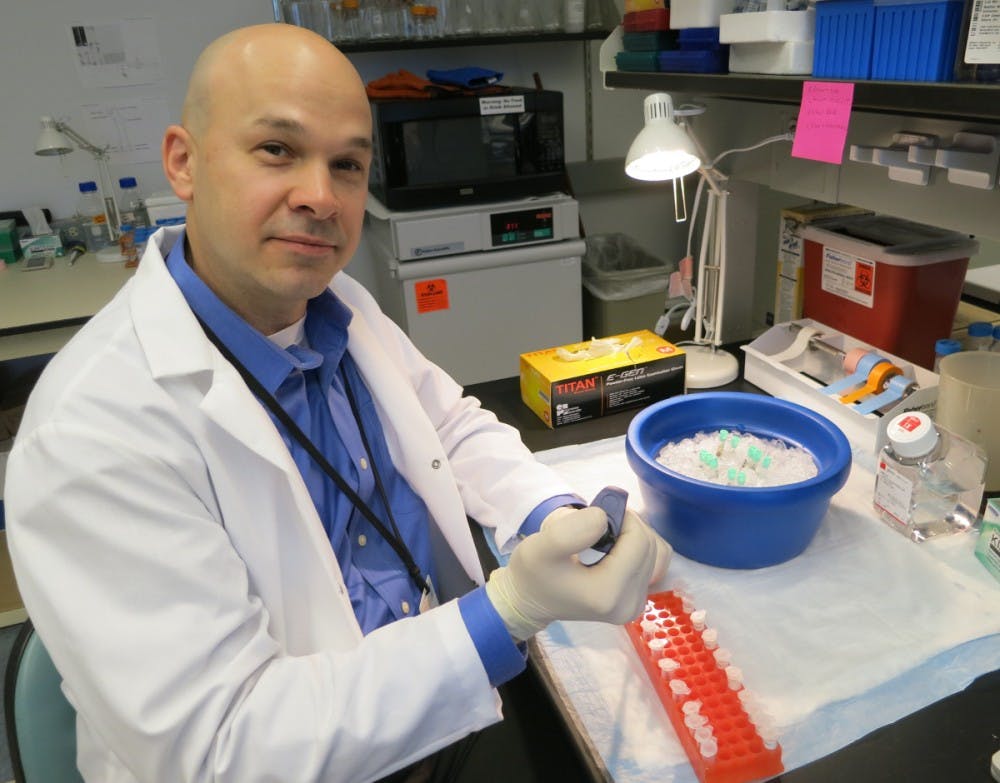About 10 million Americans have osteoporosis, a disease that weakens bones and makes them more prone to fractures, according to the National Osteoporosis Foundation. An additional 44 million have low bone density, giving them an increased risk for developing osteoporosis. Asst. Medical Prof. Charles Farber and his lab members at the Medical School’s Center for Public Health Genomics have contributed to the fight against osteoporosis by identifying multiple genes within the human genome likely associated with bone density and strength.
In order to select which genes within the vast human genome to test, Farber and fellow researchers based their predictions on existing data. The data was provided by genome-wide association studies (GWASs), a type of examination that determines whether certain groups, genes or regions of the genome are responsible for specific traits.
“Much of the differences in bone strength between people is due to genetics and over the last decade GWASs have successfully identified the location of hundreds of genetic variants influencing bone mineral density, a major predictor of osteoporotic fracture,” Farber said in an email statement.
While GWASs provide the relative location of genes in the genome, they are unable to reveal which definitive gene is responsible for disease.
“GWASs provided us with a roadmap,” Farber said. “Our situation is similar to finding a house in a neighborhood without knowing its specific address. GWASs pinpoint the neighborhood for us, our approach then tells us which house is likely the one we are looking for. It then takes a lot of work to confirm we have the right house.”
To find the “right house” — the identity of the causal genes — Farber’s team seek out functionally collaborative genes and then map them back onto the GWAS.
“We utilized an approach that looks for functionally similar genes that are located in close proximity to GWAS associations across a large number of loci,” Farber said.
Farber and colleagues plan to continue using this technique to determine additional genes that influence osteoporosis. In the realm of patient treatment, Farber is interested in developing new therapeutic targets.
“Genetic variation makes us all different. It does so by altering genes and ultimately the proteins they produce,” Farber said. “In some cases genetic variation perturbs a gene and this perturbation leads to either stronger or weaker bones. If we can therapeutically perturb the same targets then it is possible that we can make bone stronger.”
Farber’s findings represent a promising future for innovating the treatment of osteoporosis.
“The pioneering genetics work being done by Dr. Farber and other researchers here at U.Va. is tremendously exciting,” Josh Barney, senior marketing & public relations specialist at the U.Va. Health System, said in an email statement. “By helping us understand the human genome, they are helping us understand disease, and that knowledge lays the groundwork for new cures and better treatments.”







